The Capuchin Catacombs in Palermo, Italy, are likened to a treasure trove of the largest number of mummies in Europe, containing about 1,284 mummified bodies, some of which are exceptionally well preserved. .
Palermo’s Capuchin Catacombs in Sicily, southern Italy, were built in the 16th century. This place is likened to the treasure store for the largest number of mummies in Europe, with about 1,284 mummified bodies, including some of them. 163 child mummies.
Up to now, this place is still open to the public to visit and has become a destination to attract tourists who like thrills, love the creepy and scary things.
Stepping inside the crypt was cool and damp, wafting through the smell of rotting materials. Air dust rushed into the nose of the visitor. Silence enveloped the entire space, amidst the dim light.
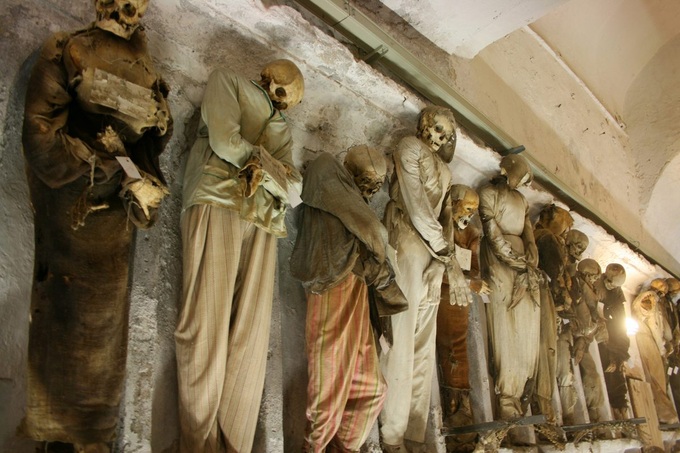 The mummies inside the Capuchin catacombs in Palermo (Image: Atlasobscura).
The mummies inside the Capuchin catacombs in Palermo (Image: Atlasobscura).
This is where many bodies are paid by relatives to preserve. The skeletons were arranged on the walls of the catacombs in an orderly manner, in many different positions. Through the costumes, they partly tell the details of their lives.
For example, monks wear robes, soldiers wear uniforms, women’s dresses represent the fashions of the time they lived. Meanwhile, young mummies are dressed in the best of costumes.
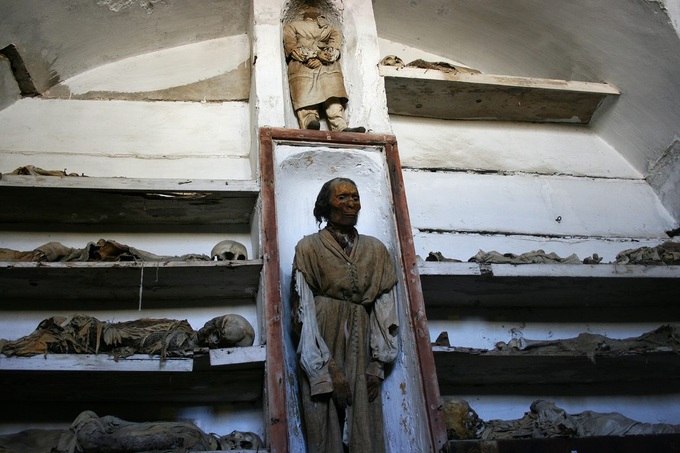
The mummies in many different positions (Photo: Atlasobscura).
One of the most famous mummies of the Capuchin catacombs is Rosalia Lombardo, a two-year-old girl who died of pneumonia caused by influenza in Spain in 1920.
Her father asked Alfredo Salifia, a famous chemistry professor at the time, to embalm his daughter. This is considered one of the best preserved mummies in the world. After many years, it seemed that her skin was still rosy, and her hair was tied with a golden bow, making Rosalia seem to be sleeping peacefully.
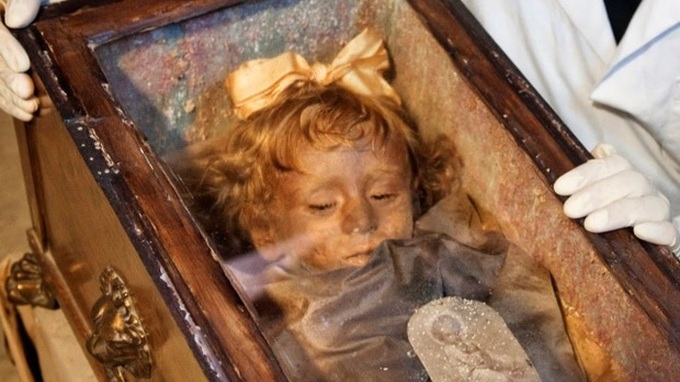
The mummy of Rosalia Lombardo, a 2-year-old girl who died of pneumonia (Photo: News).
Of the 163 baby mummies, little is known about their identities and causes of death. Dr Kirsty Squires from Staffordshire University, who is leading the X-ray mummification project, is expected to work for two years to determine the condition of the babies and mummification rituals.
“Most of these babies came from middle-class families at the time, but what led to these tragic deaths is still a mystery. Since mummification rites are mainly for adults, So we wanted to know why babies get this ritual too,” said Dr.
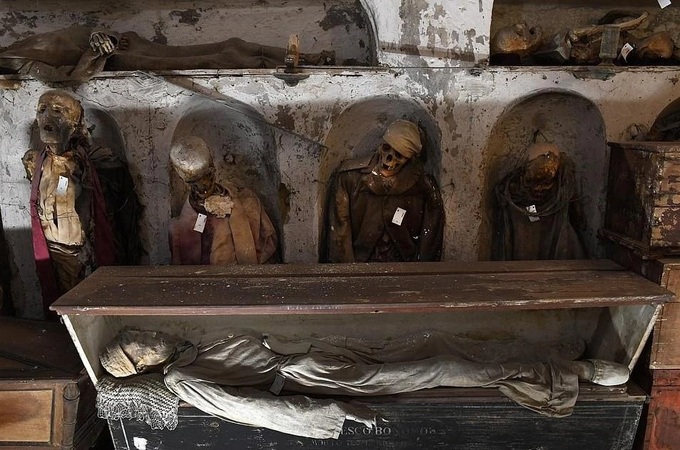
This place still keeps the forgotten mummies (Photo: Travel).
A fact that exists in this crypt is that not all mummies are “treated” equally. Several bodies were placed separately inside the catacombs. Men’s mummies should be kept away from women’s, monk mummies should be kept away from people who could be artists, lawyers, and mummies of children separated from adults.
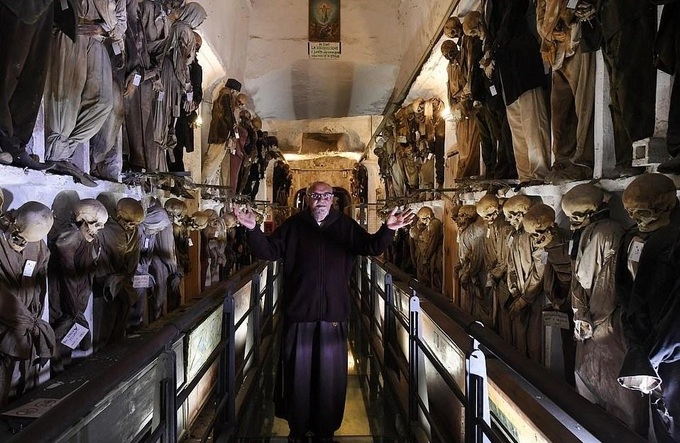
The monk is the one who introduces visitors to the catacombs (Photo: News).
According to Dr. Dario Piombino-Mascali, an expert on the project, the mummification technique of this period was so sophisticated that there were mummies of young children fitted with prosthetic eyes, as if “watching everything”.
Initially, this catacomb was only open to Capuchin monks, but later welcomed all locals and visitors from all over the world.
Source: danttri.com.vn








